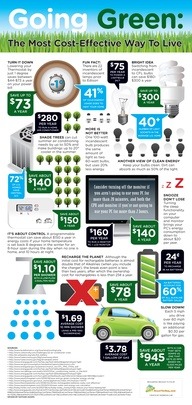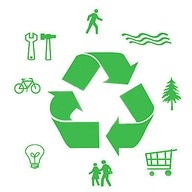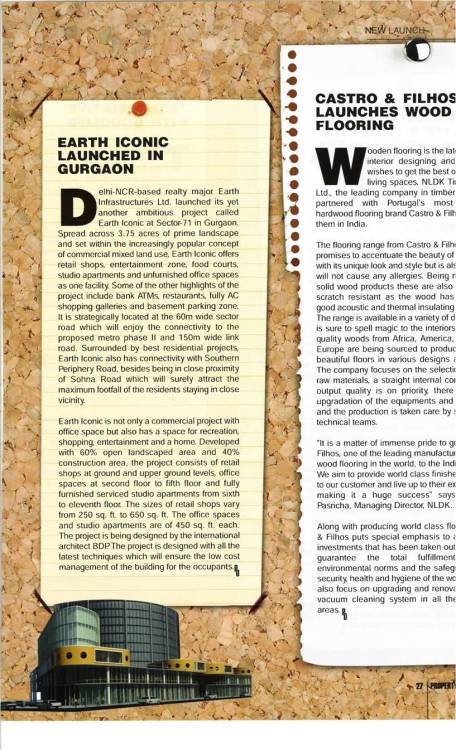With all the hype about “going green,” you may have already started replacing household cleaners with organic ones or maybe you’ve even traded in that gas-guzzling car for a hybrid, but why stop there? Check out some office-greening opportunities below. The possibilities are endless!
1. Check Out Soy-Based Ink
Ink made from soybeans is not only better for the environment but better for your company’s bottom line, as well. Soy-based ink benefits:
- Lower levels of volatile organic compounds than ink made from petroleum meaning less harmful toxins emitted
- Produces brighter and sharper colors because of the innate clearness of the soybean oil
- Makes paper easier to recycle because it’s easier to remove in the de-inking process
- Prices are comparable to those for petroleum-based ink, but less soy-based ink is needed per print job and it reduces paper waste, so you are actually saving money
- Soy-based ink supports American crops
Soy-based ink is currently only available for commercial printers, not your office printers or ballpoint pens.
Quick Stats
- Soybeans only use about 0.5 percent of the total energy that is needed to create the ink.
- About 90 percent of the country’s daily newspapers with circulations of more than 1500 use soy ink.
- About one quarter of commercial printers in the United States operate using soy ink.
- When soy ink reaches its full potential, it will consume 457 million pounds of soybean oil a year.
2. Eliminate Vending Machine Waste
Coffee-making vending machines may save you from caffeine-withdrawal headaches in the morning, but they don’t help out the environment. If your office vending machine dispenses its own cups, make sure they are recyclable or see if the machine allows you to use your own reusable mug instead of dispensing a plastic cup each time it makes a beverage.
Other options:
- Provide machines that allow employees to make their own beverages.
- Ask the machine provider to de-lamp the machine.
- Add an occupancy sensor on the machine that reduces the vending machine’s power requirements during periods of inactivity.
Quick Stats
- A typical refrigerated vending machine consumes 400 Watts—at a rate of 6.39 cents per kWh, that’s an annual operating cost of $225.
- De-lamping vending machines can save $100 every year.
3. Cut Down on Office Transportation
Carpools and public transportation benefit both the environment and your employees. Here’s some ideas:
- Offer carpool-matching services that allow employees to find co-workers that live near them.
- Encourage biking and walking to work by providing bike racks outside of the office.
- Provide parking incentives such as closer/shaded parking spots for carpoolers.
- Consider telecommuting to allow employees to work from home one day a week work.
- What about a workweek with four 10-hour days instead of five eight-hour days?
Quick Stats
- Driving 10 percent less, by walking, cycling, carpooling, or taking public transit, can reduce greenhouse gas emissions by 0.2 to 0.8 tonnes per year, depending on the vehicle.
- According to AAA, the cost for owning and operating an average size car is 52.2 cents per mile, when driven 15,000 miles per year.
- Carbon dioxide is the number one contributor to the greenhouse effect, and cars produce about 30 percent of the nation’s carbon dioxide emissions.
4. Monitoring Lighting Usage
We obviously can’t work without lighting, but we can do our best to cut down on unnecessary use of lighting. Lighting reduction options:
- Light exit signs with lower energy bulbs like compact fluorescent lamps (CFLs), light emitting diodes (LEDs), neon lighting or electroluminescent lighting technology.
- Replace old fluorescent lighting fixtures using T-12 lamps with T-8 fluorescent lamps for better color, less flickering and 20 percent less energy use.
- Check out occupancy sensors for areas of the office that aren’t used as much, such as the break or conference room.
Quick Stats
- Replacing tungsten bulbs with compact fluorescent lamps typically makes an immediate cost savings of between 50-80 percent, and CFLs last up to 10 times longer. When they do burn out, make sure you recycle CFLs using Earth 911.
- Over its life span, a fluorescent tube will save 640 kWh of electricity compared with the equivalent 100-watt standard bulb. This reduces the production of carbon dioxide, a green house gas, by half a ton and sulphur dioxide, which causes acid rain, by 3 kg.
- According to a US Department of Energy (DOE) end use study from 1995, lighting accounts for about 29 percent of the energy use in a typical office.
5. Make the Most of Office Equipment
According to the Department of Energy, office equipment accounts for 16 percent of an office’s energy use. The use of computers, printers, copiers and fax machines adds up, but simply turning your computer’s sleep mode on when you’re not using it can save energy (screen savers are energy wasters, not savers).
In addition to putting your computer to sleep when you are away:
- Turn the machine off when you leave the office for the night
- Activate sleep mode for printers, copiers and fax machines so they’ll sense inactive periods
- Consider consolidating these machines by purchasing a machine that performs multiple office functions.
If you’re looking to purchase new office equipment, look for
ENERGY STAR qualified products to cut down energy use and pollution.
Quick Stats
- A Lawrence Berkeley Lab study from 1999 estimated that one workstation (computer and monitor) left on after business hours is responsible for power plants emitting nearly one ton of CO2 per year.
- If every U.S. computer and monitor were turned off at night, the nation could shut down eight large power stations and avoid emitting 7 million tons of CO2 every year.
- IBM estimates it saved $17.8 million worldwide in 1991 alone by encouraging employees to turn off equipment and lights when not needed.
6. Monitor Paper Usage
According to the Environmental Protection Agency, each employee in a typical business office generates 1.5 pounds of waste paper per day. There are several ways to cut down on how much paper you use, including:
- Make hard copies only when necessary.
- View documents on your computer instead of printing them out.
- Use a stick-on label on the first page of a fax instead of a full cover sheet.
- Reuse paper that only has printed material on one side.
- Make sure all printers and copiers are set up to print on both sides of paper.
When buying paper:
- Buy recycled paper made from a high percentage of post-consumer recycled content.
- Look for paper that is processed chlorine free (PCF) instead of totally chlorine-free (TCF) because its produced without elemental chlorine or chlorine derivatives.
- Use unbleached and uncolored paper. If you need to use colored paper, use pastel colors.
- Buy products in bulk to minimize packaging.
Quick Stats
- A single-sided 10-page letter costs $0.55 to mail; that same letter, copied onto both sides of the paper, uses only five sheets and $0.34 in postage.
- A ton of 100 percent recycled paper saves the equivalent of 4,100 kWh of energy, 7,000 gallons of water, 60 pounds of air emissions, and three cubic yards of landfill space.
- In the U.S., over 40 percent of municipal solid waste is paper—about 71.8 million tons each year.
7. Keep Your Cool … and Warmth
According to a TIME magazine article, heating, cooling and powering office space are responsible for almost 40 percent of carbon dioxide emissions in the U.S. and eat more than 70 percent of total electricity usage. You can save about 10 percent on your electricity bill by just adjusting that thermostat by one or two degrees. Other ideas:
- Use automatic setback thermostats to adjust the temperature for weekends and evenings.
- Consider outside air economizers that use outside air to cool down buildings when the air outside is cooler than the air inside.
- Think about solar shading to reduce the amount of heat from the sun that penetrates your office building.
- Keep the blinds closed to conserve heat in winter and keep it out during summer.
Quick Stats
- Heating, cooling and ventilation accounts for 39 percent of the energy use in a typical office.
- An adjustment of only a degree or two can cut heating or cooling bills by two to three percent. Extending that to three or four degrees can produce savings of 10 percent or more.
8. Put Someone in Charge
Hire an energy manager or transportation coordinator. It may be beneficial to have someone in the office whose sole job is to set up carpooling or keep track of office recycling and energy use. The money spent on paying somebody to hold this position will be well worth it when you get your utility bill and help save our planet.
via Tumblr http://innovativegreenliving.tumblr.com/post/25158365900/8-ways-to-green-your-office









